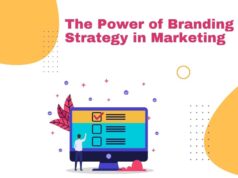A great product idea is not enough. Many startups fail not because their product is bad, but because nobody actually wants to buy it. They build something innovative, elegant, and powerful, only to launch it to the sound of crickets. This common pitfall highlights a crucial, often-overlooked step in the entrepreneurial journey: validating market demand.
Before you invest months of effort and significant capital into development, you need to answer one fundamental question: “Are people willing to pay for this?” Confirming that a real, substantial market exists for your solution is the single most important thing you can do to de-risk your venture. It transforms your project from a hopeful gamble into a calculated business decision.
This guide will walk you through a systematic approach to identifying and measuring market demand. We will cover practical strategies for understanding your target audience, analyzing the competitive landscape, and gathering concrete evidence that your product has a place in the market. By following these steps, you can build your business on a solid foundation of customer need, significantly increasing your chances of a successful launch and long-term growth.
Understanding the “Why” Behind Market Demand
Market demand isn’t just about whether people like your idea; it’s about whether your product solves a problem so painful or offers a benefit so desirable that they are compelled to act. This distinction is critical. Friends and family might tell you your idea is “cool,” but true market demand is measured by the willingness of strangers to part with their time or money.
At its core, identifying demand is about empathy. It requires you to step outside of your own perspective and deeply understand the world of your potential customers. What are their daily frustrations? What goals are they trying to achieve? Where do existing solutions fall short? A product that addresses a genuine, recurring pain point has a built-in audience.
Think of it as the difference between a “vitamin” and a “painkiller.” A vitamin is nice to have—it offers incremental improvements and future benefits. A painkiller, on the other hand, solves an immediate, acute problem. Customers will actively seek out and pay for a painkiller. Your goal is to determine if your product is a must-have painkiller for a specific group of people.
1. Start with Secondary Research
Before you start talking to potential customers, you can gather a wealth of information from existing sources. This preliminary step, known as secondary research, helps you understand the broader market landscape, identify trends, and refine your assumptions without a significant upfront investment.
Keyword Research Tools
One of the most direct ways to gauge interest is to see what people are searching for online. Tools like Google Keyword Planner, Ahrefs, and Semrush can reveal the search volume for terms related to your product or the problem it solves.
- Look for Problem-Based Keywords: Instead of searching for your solution (which doesn’t exist yet), search for the problem. If you’re building a meal-planning app for busy families, look at search volumes for phrases like “quick family dinner ideas,” “healthy meal prep for kids,” or “what to cook this week.” High search volume indicates a widespread, actively researched problem.
- Analyze Search Intent: Pay attention to the types of content that rank for these keywords. Are they blog posts, forums, or product pages? This tells you what searchers are looking for—information, community support, or a ready-made solution.
Market Reports and Industry Analysis
Industry reports from firms like Gartner, Forrester, and Nielsen can provide high-level insights into market size, growth projections, and emerging trends. While these reports can be expensive, you can often find summaries or key statistics in business news articles, industry publications, and university library databases. This data helps you quantify the potential opportunity and understand the macroeconomic forces at play.
Social Listening and Forum Mining
People are constantly discussing their problems online. Platforms like Reddit, Quora, Facebook Groups, and industry-specific forums are goldmines of unfiltered customer feedback.
- Identify Pain Points: Search these platforms for keywords related to your problem space. Look for threads where people are complaining, asking for recommendations, or sharing frustrating experiences. Pay attention to the specific language they use—these are the words your future customers use to describe their needs.
- Track Conversations: Use social listening tools like Brandwatch or even simple Google Alerts to monitor mentions of key topics. This allows you to track sentiment and identify recurring themes over time. For example, a growing number of complaints about the complexity of existing project management software could signal an opportunity for a simpler alternative.
2. Talk to Your Potential Customers
Secondary research gives you the “what,” but primary research—talking directly to people—gives you the crucial “why.” Customer interviews are the most effective way to validate your assumptions and uncover deep insights into the user’s mindset.
Finding the Right People to Interview
Your goal is not to talk to everyone, but to talk to people who represent your ideal customer profile. If you’re building a tool for freelance graphic designers, your feedback from corporate accountants won’t be very useful.
- Leverage Your Network: Start with your personal and professional networks on platforms like LinkedIn. Ask for introductions to people who fit your target demographic.
- Use Online Communities: Reach out to members of relevant online communities. If you’re targeting small business owners, engage in entrepreneurship subreddits or Facebook Groups. Be transparent about your intentions—state that you’re doing research for a new product and would love their expert opinion.
- Offer an Incentive: People’s time is valuable. Offering a small incentive, like a $20 coffee gift card, can significantly increase your response rate and show that you value their input.
Conducting Effective Interviews
The goal of a customer interview is to listen, not to sell. Your job is to understand their world, not to convince them your idea is great.
- Ask Open-Ended Questions: Avoid simple “yes” or “no” questions. Instead of asking, “Would you use an app that does X?” ask, “Tell me about the last time you tried to do X. What was that experience like?” This encourages storytelling and reveals context you might have missed.
- Focus on Past Behavior: People are notoriously bad at predicting their own future behavior. Instead of asking what they would do, ask what they have done. Questions like “How do you currently solve this problem?” and “Have you ever paid for a solution to this?” provide much more reliable data.
- Listen for “Hacks” and Workarounds: When people create their own makeshift solutions—like using a complex series of spreadsheets to manage a process—it’s a strong signal of an unmet need. These workarounds are clear evidence of a problem worth solving.
3. Analyze Your Competition
The presence of competitors is not a bad sign; in fact, it’s often a form of validation. It proves that a market exists and that people are already spending money to solve the problem you’re targeting. Your job is to figure out where your competitors are succeeding and, more importantly, where they are failing.
This is especially important in crowded markets like social media management, where dozens of tools compete for attention. If you’re developing a solution in this space, look closely at what’s missing in platforms like Hootsuite, Buffer, or Later. Are users frustrated with usability, pricing, or analytics limitations? These gaps can help you carve out a unique space.
Direct and Indirect Competitors
Identify both direct competitors (companies offering a similar solution to the same audience) and indirect competitors (companies offering a different solution to the same underlying problem). For example, if you’re launching a new gourmet meal kit service, Blue Apron is a direct competitor, while the local grocery store is an indirect competitor.
Uncover Their Weaknesses
Your opportunity lies in the gaps left by your competitors.
- Read Customer Reviews: Scour review sites like G2, Capterra, and Trustpilot, as well as the app store reviews for your competitors. Look for recurring complaints. Do users find the product too expensive, too complicated, or lacking a specific feature? These complaints are your roadmap for differentiation.
- Analyze Their Marketing: Study their websites, ads, and social media presence. Who are they targeting with their messaging? What value propositions do they emphasize? This can reveal which market segments they are focusing on and which ones they might be neglecting.
- Become a Customer: The best way to understand a competitor’s product is to use it yourself. Sign up for a free trial or purchase their product. Experience their onboarding process, use their key features, and interact with their customer support. This firsthand experience will reveal strengths and weaknesses that you can’t see from the outside.
4. Test Your Value Proposition with a Minimum Viable Product (MVP)

Once you have strong indicative evidence from your research, it’s time to run an experiment to see if people will actually take action. This is where a Minimum Viable Product (MVP) comes in. An MVP is the simplest version of your product that can deliver core value to a user. Critically, an MVP doesn’t have to be a piece of software.
The Landing Page MVP
The easiest and most common form of an MVP is a simple landing page. This page should clearly articulate your value proposition: what problem you solve and for whom.
- Craft a Compelling Headline: Your headline should grab the attention of your target audience and state the primary benefit of your product.
- Explain the “How”: Briefly explain how your product solves the problem. Use bullet points or simple graphics to make the information digestible.
- Include a Clear Call to Action (CTA): This is the most important part of the experiment. The CTA asks the visitor for a small commitment, which serves as a measure of their interest. Examples include “Sign up for early access,” “Join our waitlist,” or even “Pre-order now for a 50% discount.”
Drive Traffic to Your Page
Once your landing page is live, you need to get your target audience to see it. Use targeted ads on platforms like Google, Facebook, or LinkedIn. Directing a small budget (e.g., $100-$500) toward a highly specific audience can give you valuable data on how many people are interested enough to click your CTA. A high conversion rate (the percentage of visitors who complete the CTA) is a strong signal of market demand.
Your Next Steps
Identifying market demand is not a one-time event; it’s an ongoing process of learning and adapting. The insights you gather before launch will continue to guide your product development, marketing strategy, and overall business direction. By grounding your startup in a deep understanding of customer needs, you replace guesswork with evidence and hope with strategy.
This approach requires patience and a willingness to be wrong. You may discover that your initial idea doesn’t have the market you thought it did, but that’s not a failure—it’s a discovery that saves you from building something nobody wants. More often, you’ll uncover insights that allow you to pivot and refine your idea into something even more powerful and resonant with the market. Start with these research methods, listen intently to what the market tells you, and build your business with the confidence that comes from knowing you’re solving a real problem for real people.
Learn more: Email Marketing Tips for Seasonal Campaign









